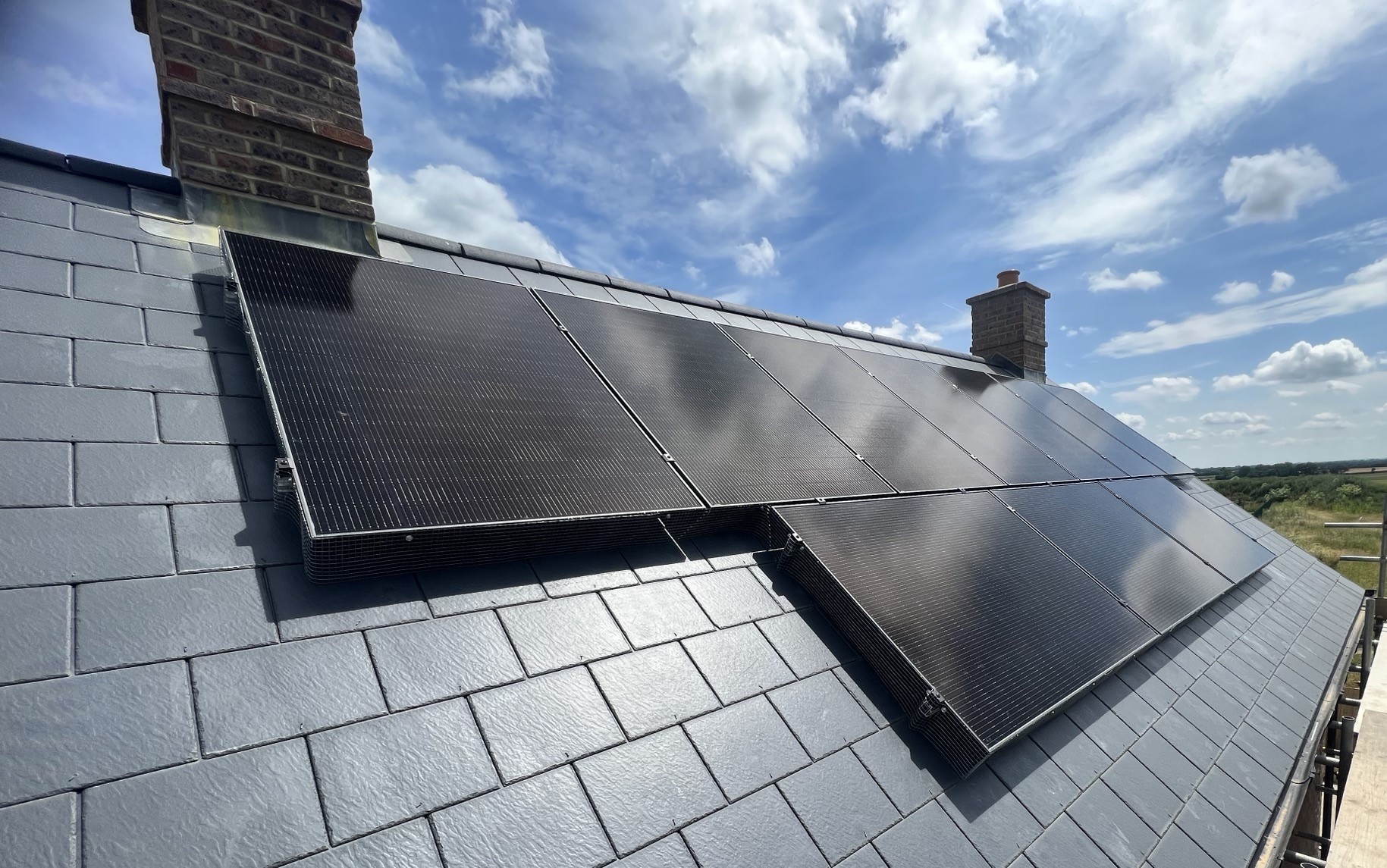As the UK moves towards a cleaner, greener energy future in the race to be Net Zero by 2050, the use of solar farms is increasingly important. Rooftop solar is important to give households and business energy independence, but those who don’t have a suitable roof space for solar panels are still relying on grid electricity produced by fossil fuels. Solar farms take solar power to the next level, generating large volumes of electricity for homes and businesses via the National Grid.
This article will explore what solar farms are, how they work and why they play a vital role in the UK’s race to Net Zero.
What is a Solar Farm and How Does it Work?
A solar farm – also known as a photovoltaic (PV) power station – is a large collection of ground mounted solar panels installed on open land. Solar farms generate electricity on a larger scale than rooftop solar to power thousands of homes and business or supply the National Grid. Solar farms can vary in size from a smaller community based solar farm to a projects that produce multi-megawatts spanning dozens of acres.
In simple terms, solar farms work the same way that a roof top solar installation works – just on a larger scale. Solar PV panels convert sunlight into direct current (DC) electricity. They are then connected to solar inverters which convert the DC electricity into usable alternate current (AC) electricity. This is then either used locally, stored in batteries or exported to the National Grid.
Benefits of Solar Farms
As with any form of solar power, the main benefit of solar farms is clean electricity generation with 100% emission free electricity. This means solar farms are supporting the UK’s journey to Net Zero by producing large volumes of clean electricity. A solar farm can generate 400MWh per year for every acre it covers – enough power to power over 100 homes for a year. There is low-impact on the land – it doesn’t have to be agricultural land – it can be any large space. Some solar farms combine the solar site with animal grazing or wildflower meadows to promote biodiversity.
Do Solar Farms Impact the Environment?
In most cases, planning permission means the impact on local environments is minimal and can even offer ecological benefits such as wildflower meadows for pollinators, grazing for animals to maintain the land and hedgerow restoration which sometimes will go damaged for years without restoration. Solar farms are silent, non-polluting and reversible, meaning the land can be returned to it’s original use at the end of the lifespan of the solar farm.
Why Solar Farms Matter to All of Us
Whether or not you live near one, solar farms are powering real progress toward a cleaner, more sustainable UK. They reduce our dependence on fossil fuels, help stabilise energy prices, and cut harmful emissions—all while using the free and abundant energy of the sun.
As the demand for renewable energy continues to grow, solar farms will play an essential role in meeting national energy needs and supporting the UK’s transition to Net Zero by 2050.
While progress with green energy on the large scale is increasing, it is still a long way off before electricity is produced solely through renewable energy. Until the UK has transferred completely onto green energy, electricity prices will continue to rise and even once the UK is on cleaner, greener energy prices will still fluctuate depending on seasons.
Now is the time to consider rooftop solar, so contact SolarTherm UK today – whether your installation is small or large we’re the number 1 solar specialists in the South East – operating for over 15 years. Call us today for a free bespoke quote and design – no hard-sell, just honest, expert advice.
Your home. Your energy. Your future.





